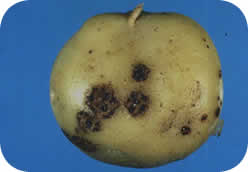
Peter Molesworth 
PhD student, School of Chemistry, University of Tasmania
What did you study at university and why?
I grew up in rural Gloucestershire in the United Kingdom. Having always enjoyed all of the natural sciences ever since I was young (I loved making vinegar rockets!), I choose chemistry because I enjoyed experimenting in the lab. As my undergraduate degree I undertook a four year Masters in Chemistry with professional experience at the University of Warwick in UK. I choose this particular course because it gave me the opportunity to travel. During the third year of my degree I took the opportunity to spend four months working with Dr Jason Smith at the University of Tasmania. I worked towards the synthesis of a series of biologically active compounds found in the skins of poison arrow frogs. Having very much enjoyed Tasmania, I travelled home via the east coast of Australia and New Zealand. I completed my undergraduate degree working on ‘Bucky balls’ and won a Thomas Crawford Memorial Scholarship which allowed me to return to Tasmania to complete my PhD.
What does your current research involve?
 Have you ever wondered what causes some of the little brown bits in your chips? Or the brown black lesions on some potatoes, like the one shown?
Have you ever wondered what causes some of the little brown bits in your chips? Or the brown black lesions on some potatoes, like the one shown?
They are caused by a soil bacterium Streptoyces scabies, and more specifically, a class compounds called Thaxtomins. Potato scab costs Tasmanian and mainland Australian farmers millions of dollars a year in lost profits. Whilst careful growing practices can reduce scab, it still remains an expensive and worldwide problem. Harvested potatoes that contain high levels of scab contamination fetch a lower price, because modern steam peeling methods cannot remove all the scab and therefore cannot be used for the lucrative potato chip market.
The Thaxtomin compounds can be used in research to help develop lines of potatoes that are resistant to scabs. Any plant that can resist the effects of a Thaxtomin spray should have an enhance resistance to the bacterium. Currently thaxtomins are produced by fermentation which is time consuming and expensive.
The aim of my project is to synthesise the Thaxtomin class of compounds which cause the scabs. Those and other similar ones are then tested for their biological activity and possible future application as herbicides or as a research tool in to help combat this expensive disease.
Why do you study science and what does the future hold?
I have always loved a challenge, and my research provides that. I have loved science since I was young because I like finding answers to the questions. Science is full of amazing opportunities, and provides you with the chance to make a difference to the world and the opportunity to travel. Working in research is hard work but a lot of fun. Every day is different and I have the freedom to plan each day. Once I complete my PhD I intend to continue in the synthetic chemistry research area — the only question is: where in the world do I want to see next?


